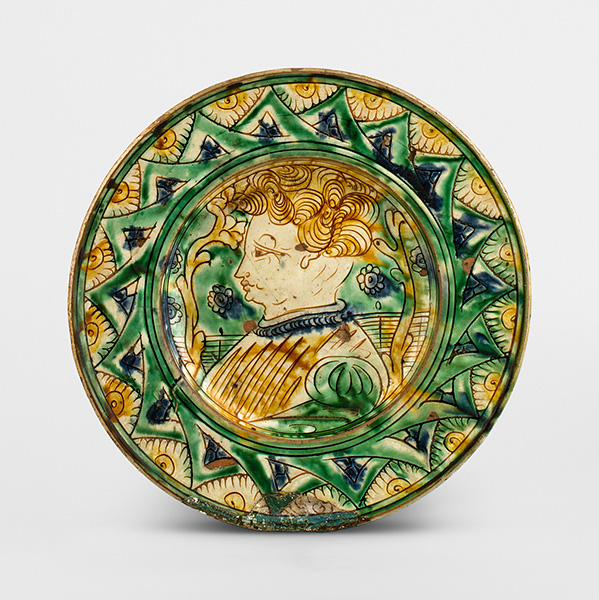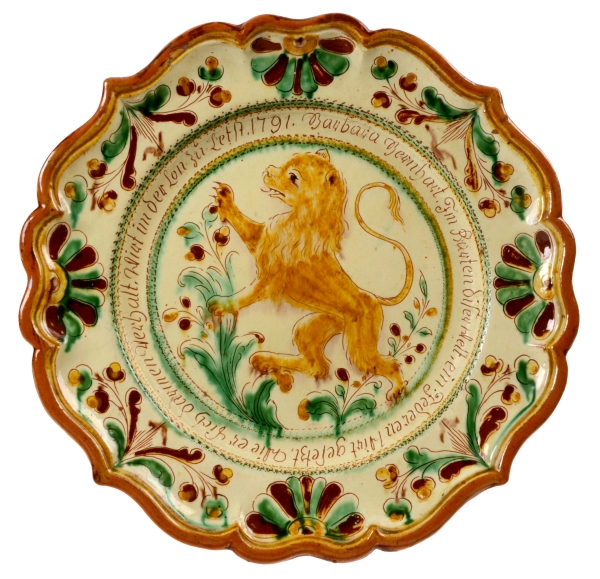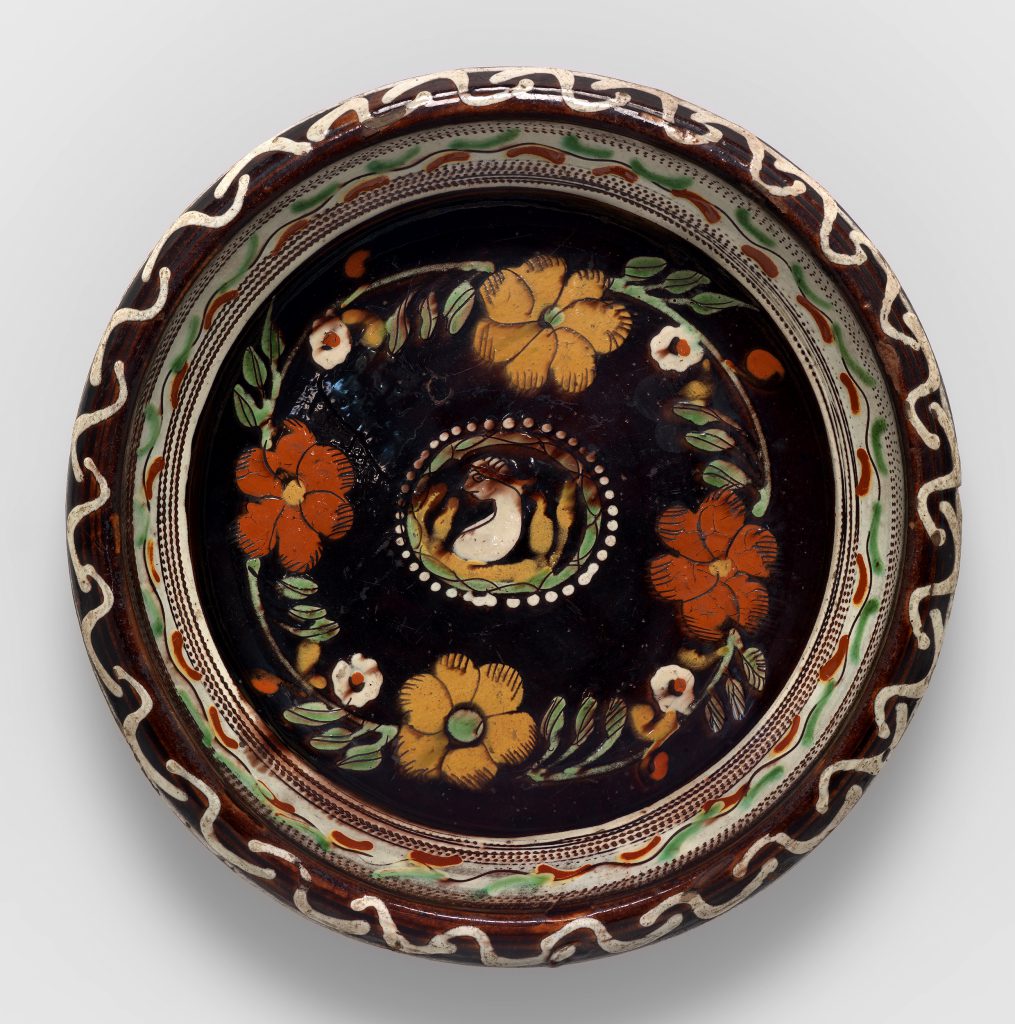
Plate, Italy, Emilia-Romagna, Ferrara?, c. 1480-1500. Slip-decorated earthenware (“ceramica graffita”).
Incised decoration in CERAMICA CH
Incised decoration was made by scratching a pattern into the wet or leather-hard surface of a vessel using a pointed or spatulate implement. Popular motifs included one or more wavy lines, herringbone patterns, concentric circles among others.

Langnau plate with curvilinear rim and incised lines around the painted patterns.

Heimberg dish with incised lines accentuating the slip-trailed patterns.
Incised lines were also used to outline the painted areas (e.g. on pottery from Langnau) or to accentuate them (e.g. on “Heimberg type” vessels). Incised decoration was applied to slipped or unslipped surfaces, leading to different effects once the vessels had been glazed and fired.
Incised decoration on white slip with green or yellow glaze became popular in Switzerland from the early 16th century onwards. It can also often be found on Italian pottery (e.g. Ceramica ingobbiata graffita arcaica, arcaica tardiva and arcaica evoluta, as well as graffita a punta e stecca), some of which was exported to France and from the 14th to 18th centuries to the region of Switzerland south of the Alps (Ticino, Valtellina).
Translation Sandy Haemmerle
German: Ritzdekor
French: décor gravé ou incisé, sgraffito sur céramique engobée

